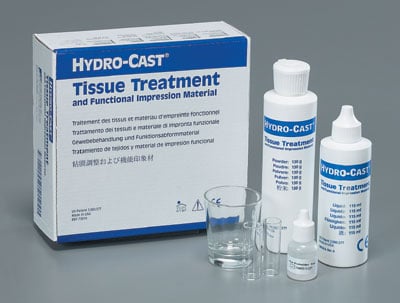
How to Achieve Good Lingual Extension with Hydrocast
Mandibular denture stability is often times a difficult challenge for us and also for patients.
For them to feel that a lower denture is stable and comfortable is very challenging, especially with ridges that are severely atrophic. One of the things that I have learned over my career is using HydroCast, which is a functional impression material. It is made by Sultan.
Continued below…
And following Jack Turbyfill’s techniques for this material has been the best way that I can achieve denture stability.
One of the challenges, though, is getting into the lingual flange area.
 And the key to getting proper extension is starting with a really good overextended alginate impression. And once the denture base is fabricated, before I add the HydroCast, I will put the denture in the mouth and have the patient lift the tongue. If the denture base rises, then I know that my extensions are too long. So I adjust the extensions until that lifting does not occur, and then I apply the HydroCast material.
And the key to getting proper extension is starting with a really good overextended alginate impression. And once the denture base is fabricated, before I add the HydroCast, I will put the denture in the mouth and have the patient lift the tongue. If the denture base rises, then I know that my extensions are too long. So I adjust the extensions until that lifting does not occur, and then I apply the HydroCast material.
Ideally, you want about 3 mm of HydroCast on your denture flange borders. If you have more that that, if the material flows deeper, then it will have a tendency to flip and bend on you.
So there is acrylic that Sultan also makes to support the HydroCast. And once those proper lingual extensions are obtained, you will be amazed at how retentive and stable the denture can be.









Leave a Reply
Want to join the discussion?Feel free to contribute!